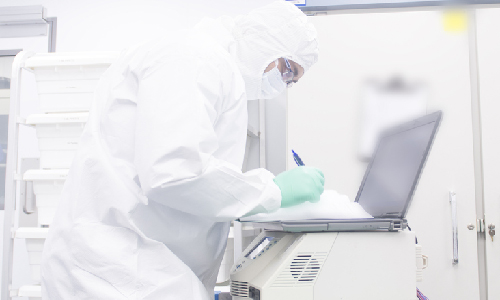
We have all experienced accreditation surveys in Sterile Processing (SP) departments and know the anxiety it creates upon preparing for their arrival. What causes this “survey anxiety” throughout the system? The answer is three-fold. One is the risk of loss of revenue from Medicare/Medicaid reimbursement due to violations found during the surveyor rounding through the sterilization processes. Two is the preparation. The questions are, “Should we only prepare for the upcoming survey, or should we proactively prepare for best practices as a continual process? The third reason for not only “survey anxiety” but a continual concern is for the patient population. The technicians’ and leaders’ desire are always to provide clean, sterile, and on-time instrumentation that provides the best patient outcomes.
Who are they?
The processing technicians and leaders should know the approach and culture of the accreditation surveyors. They have studied up. Compared to the past years, maybe even three years prior to the Covid pandemic, surveyors have become keenly interested and knowledgeable about the science of sterilization, including the tasks and processes it takes to achieve a sterile item. The risk of a surveyor coming to the SP department, asking for sterilization logs, reviewing if they are filled out, and then leaving the department is over. To their credit, and thankfully for healthcare, surveyors’ main objective in SP and Operating Rooms (OR) is to raise the standard of care.
The Joint Commission (TJC) is a driver of quality improvement and patient safety in health care. According to their model, “We do this by setting quality standards, evaluating an organization’s performance, and providing an interactive educative experience that provides innovative solutions and resources to support continuous improvement.”
Det Norske Veritas (DNV) states, “Annual surveys help lower the stress on staff and dramatically boosts your level of readiness. We've incorporated the ISO 9001 process standard - ideally suited to complex, people-powered businesses - into our accreditation.”
Centers for Medicare and Medicaid Services (CMS) states, “Quality measures are tools that help us measure or quantify healthcare processes, outcomes, patient perceptions, and organizational structure and/or systems that are associated with the ability to provide high-quality health care and/or that relate to one or more quality goals for health care. These goals include effective, safe, efficient, patient-centered, equitable, and timely care.”
Residual of Anxiety – Fear
Let’s talk about it. Many times, the fear of exposure to the leaders’ efforts or lack of effort invested in processes leads to the risk of losing their position. This is an understandable fear. The fear of citation by a surveyor can lead a manager to pass that anxiety to the staff. There are many moving parts in Sterile processes, and it can be overwhelming. The leader usually wears several hats and knows their priority list of items to complete. It may seem like there are not enough hours in a day or hands to complete the tasks.
We should forgo the fear of our past or current cultural approach of going through an inspection. Once the accreditation survey is scheduled and they enter, the team should welcome them into the department. The approach of the welcome should be likened to having a guest in your home because SP is our home away from home. We spend more time at our second home in SP than most of us spend in our family homes.
Instead of feeding into that fear, be proud of your SP. Show off your work and introduce your team members. If possible, you may even have a quick one-minute huddle and provide a “kick-off” by introducing the team and their positions to the auditor. Make it known that your SP is excited the assessors are there. Make them aware that everybody has been getting ready and is available for any questions and assistance.
On the other hand, another perspective I have heard from several managers is that they have no fear, but hopeful expectations of the surveyors to provide support and long-awaited solutions. The leaders are not necessarily grateful for surveyors citing them for certain inaccuracies but know that if they are cited, it may help support the manager’s efforts for the administration to take action. Most managers know their needs and have presented them to the administration. But, due to the lack of funds or other reasons, their requests have not been granted.
Strategies
How can a leader and team approach the survey? One tactic is to survey the processing areas. When performing a self-assessment, Advantage Support Services teaches a game we like to call “Where’s Waldo.” The leader should round to all the touch points of instrumentation, assessing current processes, equipment, and people. The next step is to compare them to recommended and required practices according to the Association for the Advancement of Medical Instrumentation ANSI/AAMI Standards. To help easily identify, exceptions to best practices can be discovered by asking, “Where’s the practice required at each touch point, or what’s wrong with this picture?” Once the audit is complete, the missed steps comprise an action plan. This action plan will help to develop key performance indicators (KPIs). If an SP Professional is asked about a missed step in the process by an accreditation surveyor, the KPI can be shared with the auditor.
These self-assessments should continue once the initial rounding has been completed. Upon continuation of this procedure, invite the administration to round through the department every quarter. The administration should include Infection Prevention, an Operating Room manager, a director, a manager of Sterile Processing, chosen lead technicians, and processing technicians from each stage of processing.
Developing technician ownership in processes is another strategy to be proactive. To effectively implement policies and procedures, engage a few technicians in the process. Keeping in mind that this is their house, they can join the development team. Those chosen few on the committee can then report back once a month during a department huddle. They can be the voice of their co-workers by asking for feedback. Their voice is invaluable to the policies and procedures that departments are going to implement. This effort will help to prepare technicians when interviewed during a survey.
Many times, surveyors will interview and round through the processes with technicians and bypass the manager or leader in the department. So, to prepare, another action to take is to huddle and huddle frequently. The time commitment can be as short as even 20 minutes per day per shift; the leader can assign policies and procedures or Instructions for Use (IFUs) of consumable products to the technicians. Each week, the technicians can review and provide the information in the huddle. Giving ownership transcends accreditation preparation. It has a domino effect not only on process improvements but develops a sustainable best practice culture.
Keep in mind that the technicians don’t have to remember all the many details of processing, but they do have to know how and where to access the details. Another strategy can be to set up an education station and an inspection station (to include a borescope) in assembly areas. The education station can house the policy and procedures, access to MIFUs, competency and education records and the current AAMI standards.
Call to Action – Common Findings
We are always asked, “What are the hot topics or trigger points that surveys will focus on each year?” First and foremost, completed competencies are crucial to inspections. Completing competencies is a great tool to help prepare for surveys as well. The details in competency are extensive. They should include tasks, rationales for that task, a demonstration, a return demonstration, possibly a grade of a test score, a level of competency recorded, and a signature. The educator or manager providing the competency to technicians should also have participated in the competency process.
Point of use care and transportation seems to be a continued hot topic. A competency for Operating Room O.R) staff in these areas is important. In SP, a score of delivery in decontamination, inspection tools in decontamination and assembly areas, how the tools are used and the IFUs followed and documented are some low-hanging fruit that can be assessed and completed to prepare for surveys. One of the inspection tools in decontamination areas is brushes, either for instrumentation or for rigid and flexible lumens. Some questions to ask yourself are, “Are the brush IFUs available and followed? Is the area using the correct brush per either the instrument or brush IFU? Are AAMI standards in place? If the brush is not a single-use device (SUD) and can be reprocessed or is it being reprocessed properly, and is that documented?”
The documentation rule I learned in nursing school was, “If it’s not documented, it didn’t happen.” That applies to our current practices in SP. Documentation is a key not just to surveyors, but for our own staff. It’s a communication tool for all shifts to let them know certain processes have been performed.
Proactive vs. Reactive Approach
Safety steps developed in processing help ensure that quality is delivered. Taking a proactive approach by assessing your touch points of processing, rounding with administration and key technicians in SP, and providing tasks in huddles to technicians to share best practices are some of the ways to prepare for accreditation surveys. All of these actions will also increase the department’s culture with a focus on quality. If a reactive approach is taken, although getting cited may help to ensure actions and even buy-in from the administration for the previous manager’s requests, it is a much more costly approach to achieving best practices and avoiding citations.
Conclusion
Would it be best to keep this process ongoing? Yes. Should we always be ready for accreditation surveys? Yes. Is this a practical approach? It could be. To implement a change in culture and a standard of excellence takes a determined effort and commitment from all parties affected by Sterile Processing. We should always be prepared for surveys, but better yet, we should always be prepared for our own staff satisfaction in SP, and, ultimately, the satisfaction of the customers and patients we are privileged to serve.
References:
Who we are. The Joint Commission. (n.d.). Retrieved November 23, 2022, from https://www.jointcommission.org/who-we-are/
DNV Healthcare - accreditation organization for hospitals and Healthcare Facilities. DNV. (n.d.). Retrieved November 23, 2022, from https://www.dnv.us/assurance/healthcare/ac.html#
Search. CMS. (n.d.). Retrieved November 25, 2022, from https://www.cms.gov/search/cms?keys=surveys

